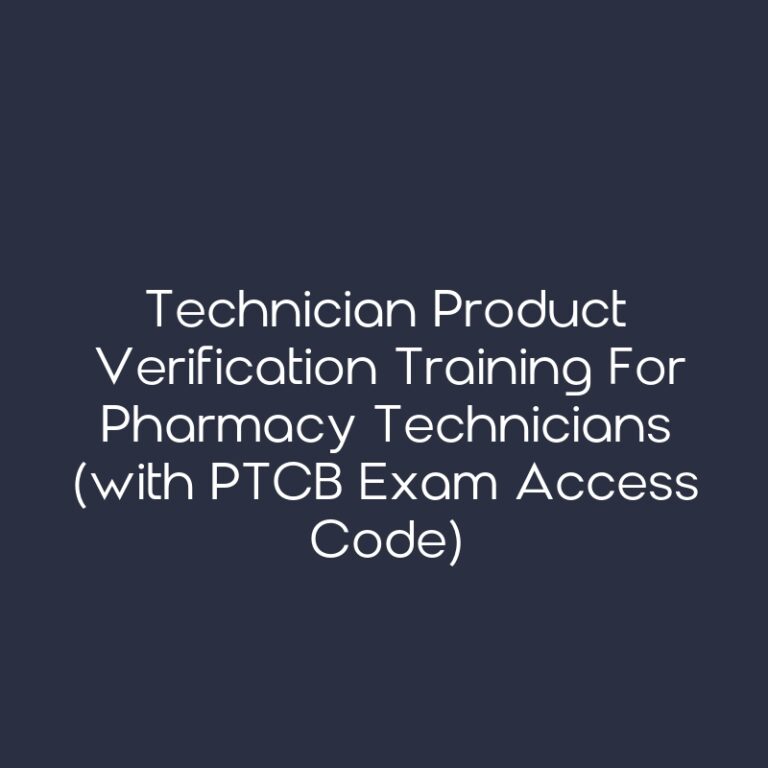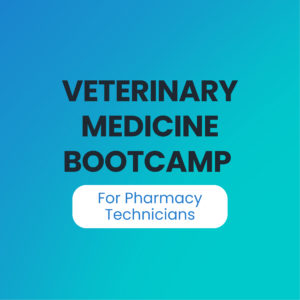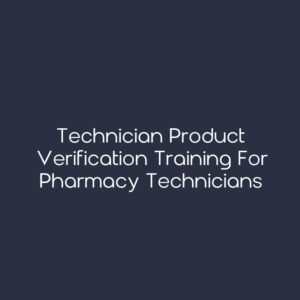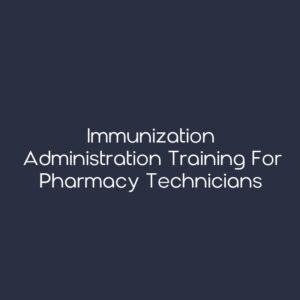Technician Product Verification Training for Pharmacy Technicians (with PTCB Exam Access Code)

Technician Product Verification Training for Pharmacy Technicians (with PTCB Exam Access Code)
Save money on your Technician Product Verification journey by bundling our training program and PTCB’s Product Verification Assessment-based Certificate Program.
This package includes:
- CEimpact’s Technician Product Verification Training for Pharmacy Technicians (Regularly $250)
- PTCB’s Technician Product Verification Exam (Regularly $89)
Note: To be eligible for PTCB’s Technician Product Verification Certificate, a candidate must hold an active PTCB CPhT Certification. For questions about PTCB’s Technician Product Verification Certificate, please visit PTCB’s Help Center.
Here’s how it works:
- Purchase this bundle
- Complete the CEimpact Technician Product Verification Training for Pharmacy Technicians Course
- Receive an access code to take PTCB’s Product Verification Assessment-based Certificate Program Exam at no additional cost!
CEimpact’s Course Details:
This 16-hour certificate course fulfills the education requirements for the Pharmacy Technician Certification Board’s (PTCB) Product Verification Assessment-based Certificate Program.
In addition to courses on patient safety, medication error prevention, and the dispensing process, it includes a unique dispensing simulation to educate pharmacy technicians serving in product verification roles in community, hospital, and long-term care pharmacies.
Successful completion of the modules results in a Certificate of Completion for Technician Product Verification.
Module 1: Advancing the Role of Pharmacy Technicians
Voice-over Power Point, 1 hour
Anthony Pudlo, PharmD, MBA, BCACP
Vice President, Professional Affairs, Iowa Pharmacy Association
1. Recognize the need for advanced pharmacy technician responsibilities to sustain the future of pharmacy practice.
2. Review national strategies to enhance the role of pharmacy technicians.
3. Describe opportunities for technicians in the provision of pharmacy services, such as medication reconciliation, telepharmacy, and technician product verification.
4. Review the literature that supports enhanced roles of pharmacy technicians in the medication distribution process.
5. Highlight opportunities for optimizing patient care by pharmacists upon the implementation of advanced technicians in pharmacy practice settings.
Module 2: Technician Product Verification
Voice-over Power Point, 1 hour
Brett Barker, PharmD
VP of Operations, Nucara Pharmacy
Kelly Kent, PharmD, RPh, BCPS
Clinical Pharmacist, Towncrest Pharmacy
Micaela Maeyart, PharmD, BCPS, BCGP
Pharmacy Director, Spencer Hospital
1. Illustrate the case to pharmacy staff, management, and Board of Pharmacy for Technician Product Verification (TPV).
2. Recognize the steps needed to prepare and implement a TPV program.
3. Outline how a pharmacy monitors for quality assurance in a TPV program.
Module 3: Advanced Review of Common Medications
Written/Self-study, 1.5 hours
Tony Guerra, PharmD
Chair/Instructor, Pharmacy Technician Program, Des Moines Area Community College
1. Group medications by pathophysiologic class using established stems (prefixes, infixes, & suffixes).
2. List common adverse effects and drug interactions.
3. List common adherence challenges.
4. Distinguish medications with similar generic names.
5. Recognize medications with multiple formulations.
Module 4: Calculations Review for Pharmacy Technicians
Written/Self-study, 1 hour
Kelly Stegh, PharmD
1. Perform calculations that involve conversion of units in the metric system.
2. Calculate the amount of product to dispense based on prescribed dosage and frequency.
3. Calculate basic pharmacy problems using ratios and proportions.
4. Calculate percent strength of a medication expressed as weight/weight, volume/volume and/or weight/volume.
5. Perform calculations that allow a compounded prescription to be reduced or enlarged.
Module 5: Dosage Forms
Voice-over Power Point, 1 hour
Tony Guerra, PharmD
Chair/Instructor, Pharmacy Technician Program, Des Moines Area Community College
1. Recognize the different routes of medication administration.
2. Identify the most common medication dosage forms.
3. Describe the advantages of different dosage forms.
4. Describe the disadvantages of different dosage forms.
5. List ways to recognize and prevent dosage form dispensing errors.
Module 6: Legal Requirements and Practice Standards
Written/Self-study, 1 hour
1. Describe the history of technician product verification.
2. Review the current Board of Pharmacy regulations in order for a pharmacy to utilize technician product verification.
3. Summarize resources available to your practice setting to implement technician product verification.
Module 7: Quality Assurance Strategies
Voice-over Power Point, 1 hour
Donna Horn, MS, RPh, DPh
Adjunct Associate Professor, University of Florida
1. Review case scenario(s) of medication error or near miss events to identify breakdowns in the system that have contributed to the error.
2. Recognize factors in your practice environment that can contribute to the occurrence of medication errors.
3. Apply knowledge of reported errors to select optimal best practice medication error prevention strategies.
4. Identify the prevalence and implications of look-alike medication packaging.
5. Summarize issues and challenges of how the use of color coding and the lack of color differentiation can lead to medication errors.
Module 8: Prescription Checking Process
Written/Self-study, 1 hour
Kelly Stegh, PharmD
Kristin Stover, PharmD, BCPS
1. List examples of methods that can be used to systematically review a prescription for accuracy.
2. Identify common medication errors in the pharmacy (look alike sound alike drugs, multiple dosage forms, decimals etc).
3. Describe types of prescription and medication errors that may occur during the prescription filling process.
4. Discuss possible prescription and medication errors that can occur during the prescription dispensing process.
5. Outline proper steps to take if a medication error is detected.
Module 9: Medication Error Prevention in the Pharmacy
Voice-over Power Point, 1 hour
Donna Horn, MS, RPh, DPh
Adjunct Associate Professor, University of Florida
1. Identify and implement system-based tools for assessing, documenting, and analyzing medication errors.
2. Initiate a risk assessment process to identify medication safety improvements.
3. Describe basic principles of CQI: Continuous Quality Improvement.
4. Define the term Root Cause Analysis and when it is needed.
5. Determine where to report medication errors and adverse drug events.
Module 10: Re-engineering Workflow for Technician Product Verification
Voice-over Power Point, 1 hour
Michael Andreski, BSPh, MBA, PhD
Associate Professor, Drake University College of Pharmacy and Health Sciences
1. Review Technician Product Verification.
2. Discuss the concept of workflow re-engineering.
3. Describe how to perform a workflow analysis.
4. Discuss the steps involved in workflow redesign.
5. Explain how to test, initiate, and assess a new workflow process in a pharmacy setting.
Module 11: Building Critical Thinking Skills for Pharmacy Technicians
Voice-over Power Point, 0.5 hours
Heidi Eukel, PharmD
Associate Professor, North Dakota State University
1. Describe the importance of critical thinking in pharmacy practice.
2. Define critical thinking in the context of pharmacy technician product verification.
3. Review examples of how to engage in critical thinking.
Module 12: Product Verification Exam
Written/Self-study, 4 hours
1. Develop a process for checking a prescription.
2. Classify errors identified during the checking process as medication, label, vial, or prescription.
3. Analyze simulated prescription scenarios for completeness and accuracy.
4. Apply product verification principles to your practice site.
Exam Completion
1 hour
None of the speakers report any actual or potential conflicts of interest in relation to these continuing pharmacy education courses.
Course fee includes course, course materials, and CPE submission to CPE Monitor.
Release Date: December 13, 2022
Planned Expiration Date: December 13, 2025
![]() CEImpact is accredited by the Accreditation Council for Pharmacy Education as a provider of continuing pharmacy education. Obtain CPE credit by completing the course, followed by the exam and evaluation (if applicable). Once successfully completed, your course will appear in your Completed Courses tab. Access your CPE statement of credit at www.MyCPEMonitor.net.
CEImpact is accredited by the Accreditation Council for Pharmacy Education as a provider of continuing pharmacy education. Obtain CPE credit by completing the course, followed by the exam and evaluation (if applicable). Once successfully completed, your course will appear in your Completed Courses tab. Access your CPE statement of credit at www.MyCPEMonitor.net.
¹CEImpact provides you with two (2) opportunities to complete the exam. The learner will not receive CPE credit after two failed attempts.
Additional information
| Duration | 16h 0m |
|---|---|
| Topic Designator | Operations |
| ACPE | Yes |
| ACPE Topic | 04 Pharmacy Administration |
| Role | Technician |
| Media-Type | On-Demand |
| Release Date | 12/13/22 |
| CEUs | 1.6 |
| Rating | 4 |
| ACPE Number | 0107-0000-22-439-H04-T |
$294.00




